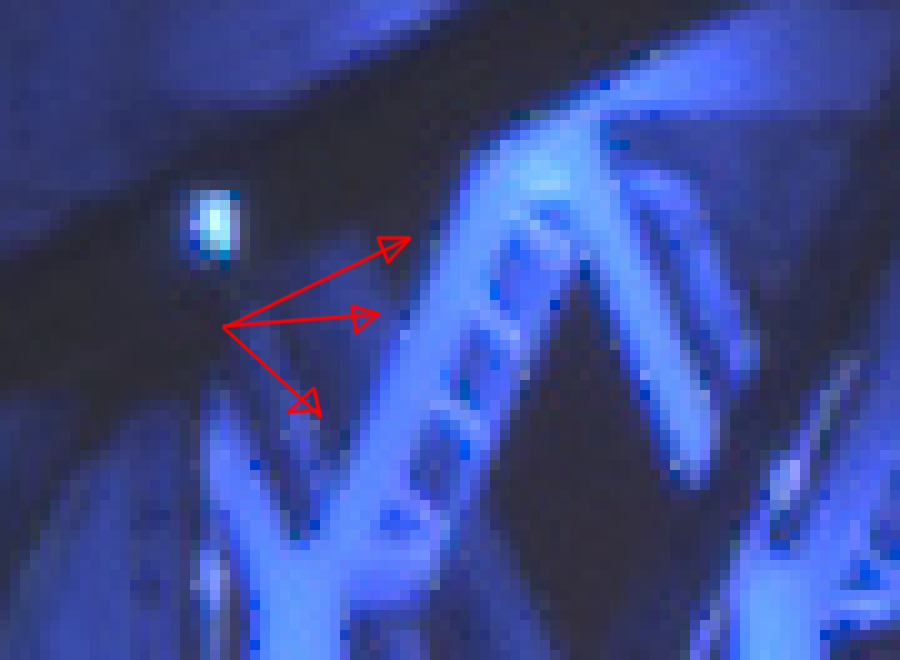Glad you asked! ![]() I’ll try to be a little clearer… I thought I did pretty good in this comment but obviously, that needs work.
I’ll try to be a little clearer… I thought I did pretty good in this comment but obviously, that needs work. ![]()
First off, regarding details, I must admit I was trying to be more critical than I should have been against Lightroom: the details are great and either comparable or identical to the OOC JPEG, so I’ll just discard Lightroom for now and say that it behaves as well as the OOC JPEG at rendering the RAW, at least that’s what I can see by doing a more systematic test…
The area I base myself on to do comparison are the oblique trusses at the top of the bridge, here (in the OOC JPEG):

This is where I look to “test” the rendering. Obviously, there’s a problem with the input profile: changing it to linear 709 is the first step to fix the “deep blue artifacts” rendering. So we go from this:

to that:

Already pretty good. But if you look at the area in question, there clearly is some “noise” on the truss, specially on the edges. The diagonal lines are not as straight and smooth as they are in the original JPEG and there seems to be some pixelisation on the edge. I am not sure how to best demonstrate this short of zooming in on individual pixels… But here’s another crop, made by exporting as a tiff, opening in GIMP to draw an arrow and crop again, then exporting as PNG:

Scaled up 10 times with gimp, without interpolation shows what I am talking about:
Those are very subtle marks! But I think they degrade the picture enough to be noticed, and that’s the problem I trying to track down.
Here’s the same process applied to the OOC JPEG:

It seems much smoother and I can’t find the same pixels breaking that soft line. Maybe it’s the JPEG rendering engine. Maybe it’s some other limit: we’re getting pretty close to the limits of everything here, from the sensor to the JPEG algorithm itself…
As I mentioned earlier, I think I understand a little better why this is happening. Correct me if I’m wrong here, but this noise would be clipped pixels, possibly introduced during highlight reconstruction, or due to white balance, or parts of the bridge are just over-exposed. So I actually tried to fix this, by focusing on reducing the noise on trusses.
I messed around with all of the above: highlights reconstruction, white balance, and of course fix the input profile. Here’s my take on this:

It’s slightly better. Of course, it’s all hazy compared to the OOC JPEG, probably because I didn’t add any sharpening whatsoever, but that’s not the point: there are still those dark pixels in there.

Sharpening actually outlines them even more of course, and I’ve seen them in pretty much every rendering attempt with free software by others here. I can’t figure out how to get rid of those, and I guess that’s the only remaining open question for me with that image. I have learned an amazing lot, thanks to everyone contributing here (again, y’all rock), but I’m also eager to crack that one final nut here.
Also, of course, messing with the white balance throws the whole image colors back off track, towards a weird green/red tint, because I used a “spot” white balance on the bridge (which seems to be blue of course).
Obviously work needed on the contrast, punching in the blacks and so on, so nothing something else can fix later: this is just to try and fix that darn bridge detail.
Just a thought: maybe that white balance difference is exactly why the camera is succeeding at rendering the trusses better? How does Fuji’s “film emulation” work anyways? Is it possible it actually works earlier on than (say) a “velvia” or other tone mapping in Darktable? Or am I comparing apples and oranges here? ![]()
Thanks again for all your hard work!

















 Darktable gives you the opportunity to back up and choose a better path in the first place.
Darktable gives you the opportunity to back up and choose a better path in the first place.